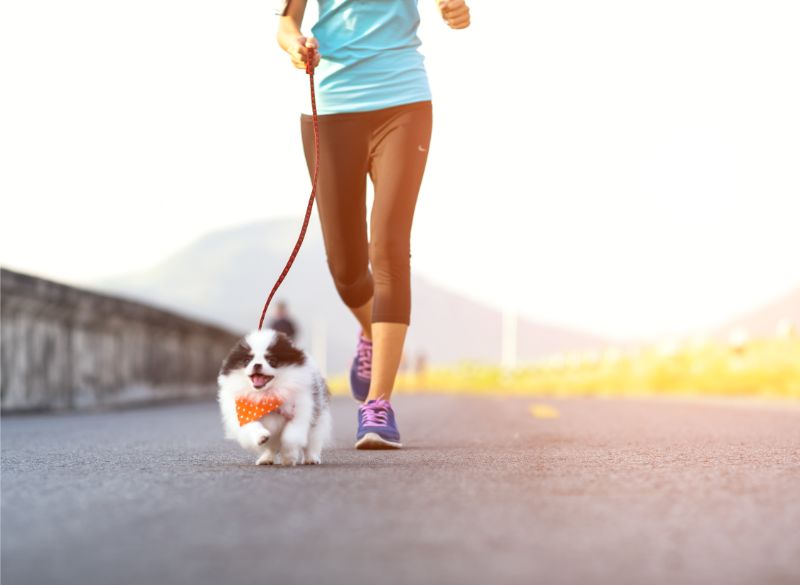Posts Tagged: Running with Your Dog
Running With Your Dog

When it comes to enjoying the outdoors, getting in a great workout, and bonding with your furry friend, running with your dog can’t be beat. Besides the many health benefits of regular exercise for pets, running provides an outlet for excess energy, reduces boredom and negative behaviors, and strengthens the bond you share.
In case you haven’t noticed, your pet’s safety is one of our top priorities at Volunteer Veterinary Hospital. We want to share some simple do’s and don’ts when it comes to running with your dog.
But First…
- Come see us. Before beginning any exercise program, schedule a wellness exam with your veterinarian. We’ll make sure your best pal is healthy enough for running and is up-to-date on important vaccines and parasite protection.
- Brush up on obedience. A good grasp of basic obedience commands is essential for your dog’s safety. Dogs who run with their owners should be able to heel, not pull at the leash, and respond to basic commands, such as “come” or “drop it.”
- Get in gear. A sturdy, 4-6 foot leash, a harness with a back clip, and a few plastic baggies for doggie waste are all you need before hitting the trail with your pet. Stay away from retractable leashes, as these can be extremely dangerous and offer little control.
Tips for Running With Your Dog
Consider these tips to ensure running with your dog is a successful experience:
- Start slowly – You wouldn’t go from a couch potato to running 10 miles overnight, so don’t expect your dog to do the same. Work up to longer distances slowly with your pet. Additionally, don’t skip the warm-up period anytime you run with your dog – a few minutes of brisk walking or slow jogging is sufficient to get the blood moving and muscles warmed up.
- Be observant – Always pay close attention to your dog’s body language and watch for signs of overexertion or heat exhaustion, such as excessive panting, drooling, stumbling, or slowing down/stopping. Never force your dog to run if they don’t want to.
- Watch the heat – Dogs aren’t able to regulate body temperature as efficiently as humans, meaning that heat stroke or heat exhaustion can come on quickly. Running during the early morning or evening hours is best during warmer months.
- Paw protection – A dog’s paw pads are tough, but they’re no match for hot pavement or asphalt, rocks, sticks, or glass. Whenever possible, choose a softer running surface, such as a trail or grass, and be on the lookout for any debris that could injure your dog’s paws.
We applaud you for giving your dog the joy and health benefits of running! Please let us know if you need more information or would like to schedule an appointment for your pup.

